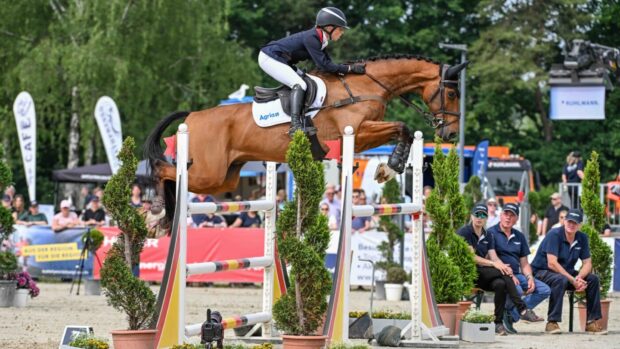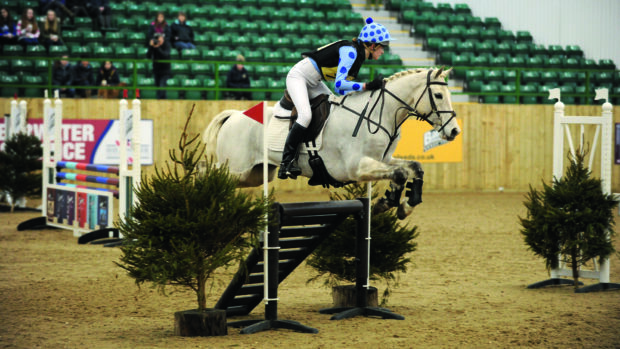Caroline Moore, former five-star eventer and British Eventing national under-18 coach and junior team coach, explains how you can use this raised pole exercise for horses to develop your horse’s hoof/brain co-ordination. It is an exercise she regularly uses when warming up for jumping or to help a young horse develop elevation in its paces.
The aims of the exercise are to improve:
- Hoof/brain co-ordination
- Accuracy
- The use of the hind leg through the transition
- Rider’s posture
- Rider’s technique in preparing for transitions
Caroline explains: “I’m using dressage boards, one metre apart from each other, but you can also use raised poles. Around 10-12m away, I have an area where I’m going to ask the rider to ride a transition. We can use the energy created from riding over the dressage boards to help the hind leg with the walk and halt transition. We then move on to some more boards coming out of the exercise — this is all about the transition forward into trot and gaining balance and rhythm as early as possible to successfully negotiate the second half of the exercise.”
The grey horse being ridden by Ros Canter in the video is just four-years-old.
“You can see how this exercise encourages the mare to use her eye, and you can see that she is raising her toes just enough,” says Caroline. “This helps improve the core stomach muscles and raising the shoulder, so it’s a great exercise for a young horse — it’s like taking them to the gym.
“Then in the downwards transition, you want to get four to five good steps of walk with the horse staying relaxed — it’s important to prepare this transition as early as you possibly can. Then move forward back into the trot and this is where you really have to work at regaining the energy to ride through the second set of boards.”
Caroline warns that this is a fairly difficult exercise but a really useful one: “This exercise also shows how important it is to look where you’re going and stay in symmetry with the horse so that you stay in perfect balance, allowing the horse to soften.”
After successfully executing the exercise with a walk transition between the two sets of raised poles, the difficulty is heightened by changing the downwards transition to halt.
“Riders need to prepare by using some half halts and thinking forward into the transition. Think of riding forward from behind so that you finish the halt off square. Then you ask the horse to move forward into the trot and it’s really important to gain activity in the step. The poles or the boards afterwards help with this because it focuses the horse on going forward.”
Points to be aware of:
- Maintaining rhythm
- Energy levels
- Fatigue
- Praise and reward
More expert training advice from Caroline:

Caroline Moore: How to train your horse to jump an angled skinny fence
Caroline Moore, former five-star eventer and British Eventing national under-18 coach and junior team coach, we learn how to teach

Subscribe to Horse & Hound magazine today – and enjoy unlimited website access all year round
For all the latest news analysis, competition reports, interviews, features and much more, don’t miss Horse & Hound magazine, on sale every Thursday.




